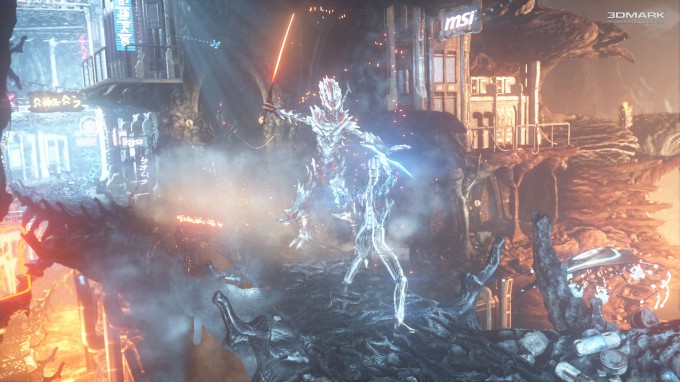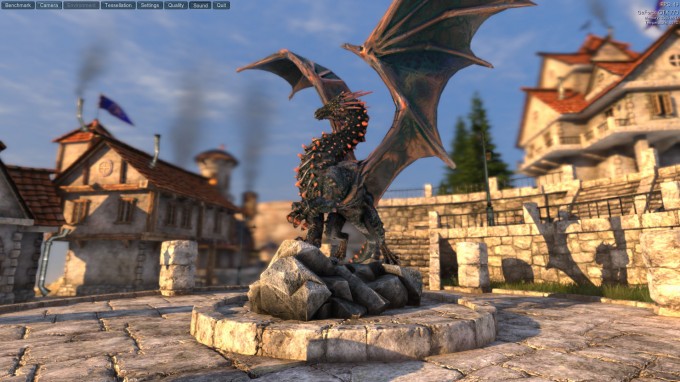- Qualcomm Launches Snapdragon 4 Gen 2 Mobile Platform
- AMD Launches Ryzen PRO 7000 Series Mobile & Desktop Platform
- Intel Launches Sleek Single-Slot Arc Pro A60 Workstation Graphics Card
- NVIDIA Announces Latest Ada Lovelace Additions: GeForce RTX 4060 Ti & RTX 4060
- Maxon Redshift With AMD Radeon GPU Rendering Support Now Available
NVIDIA GeForce GTX 980 Review: Does Maxwell Bring Maximum Gameplay?

NVIDIA’s next-gen GeForce series is here, and it brings with it a slew of new features and enhancements worth knowing about. Based on Maxwell, the GTX 900 series delivers much-improved performance-per-watt, with the GTX 980 in particular performing better than the 780 Ti – but with a TDP of 85W less. You read that right. Let’s dig in.
Page 10 – Synthetic Tests: Futuremark 3DMark, 3DMark 11, Unigine Heaven 4.0
We don’t make it a point to seek out automated gaming benchmarks, but we do like to get a couple in that anyone reading this can run themselves. Of these, Futuremark’s name leads the pack, as its benchmarks have become synonymous with the activity. Plus, it does help that the company’s benchmarks stress PCs to their limit – and beyond.
While Futuremark’s latest GPU test suite is 3DMark, I’m also including results from 3DMark 11 as it’s still a common choice among benchmarkers.
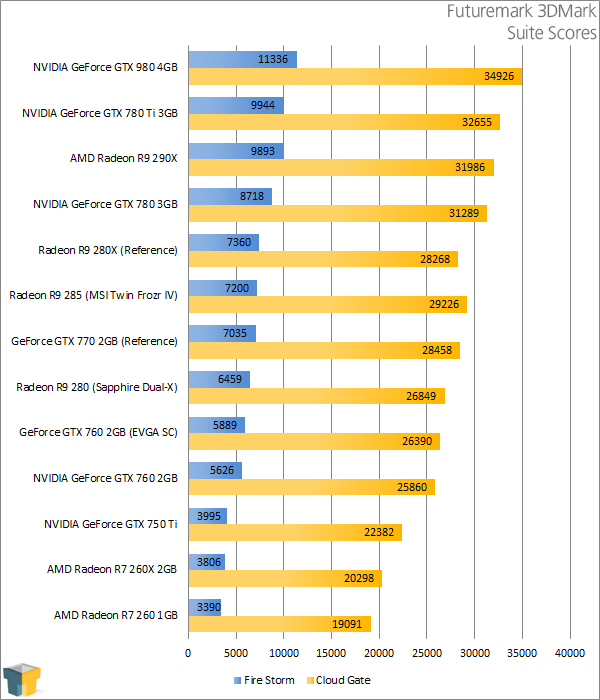
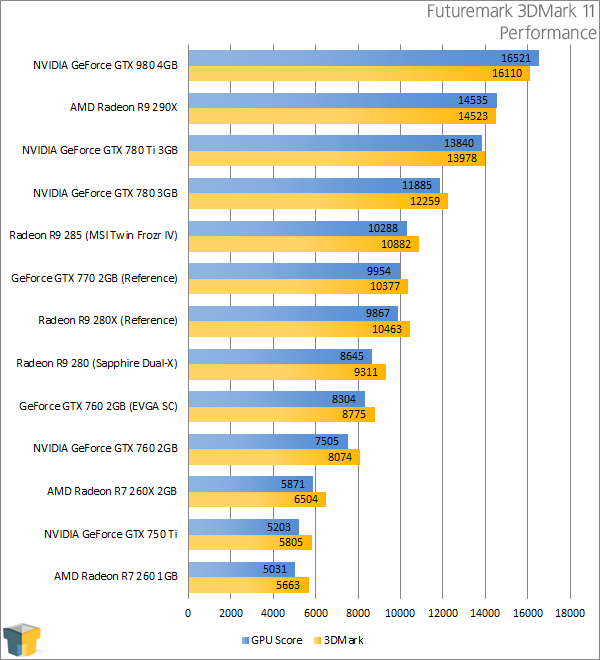
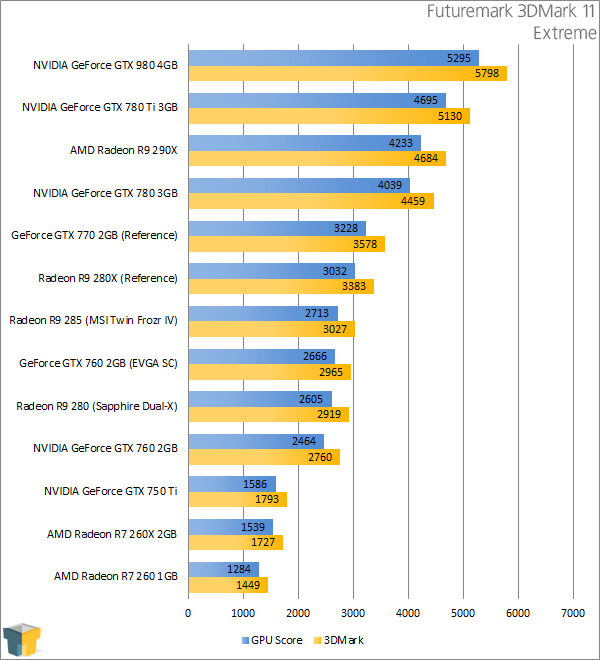
Both 3DMark suites agree that the GTX 980 is about 13% faster than the 780 Ti, and that seems fairly accurate given the real-world results we just pored over. While we haven’t tested with the TITAN Black, the GTX 980 pretty-well aligns with it. That’s not bad considering the fact that the 980 will retail for $549 – $450 less than the TITAN Black.
Unigine Heaven 4.0
Unigine might not have as established a name as Futuremark, but its products are nothing short of “awesome”. The company’s main focus is its game engine, but a by-product of that is its benchmarks, which are used to both give benchmarkers another great tool to take advantage of, and also to show-off what its engine is capable of. It’s a win-win all-around.
The biggest reason that the company’s “Heaven” benchmark is so relied-upon by benchmarkers is that both AMD and NVIDIA promote it for its heavy use of tessellation. Like 3DMark, the benchmark here is overkill by design, so results are not going to directly correlate with real gameplay. Rather, they showcase which card models can better handle both DX11 and its GPU-bogging features.
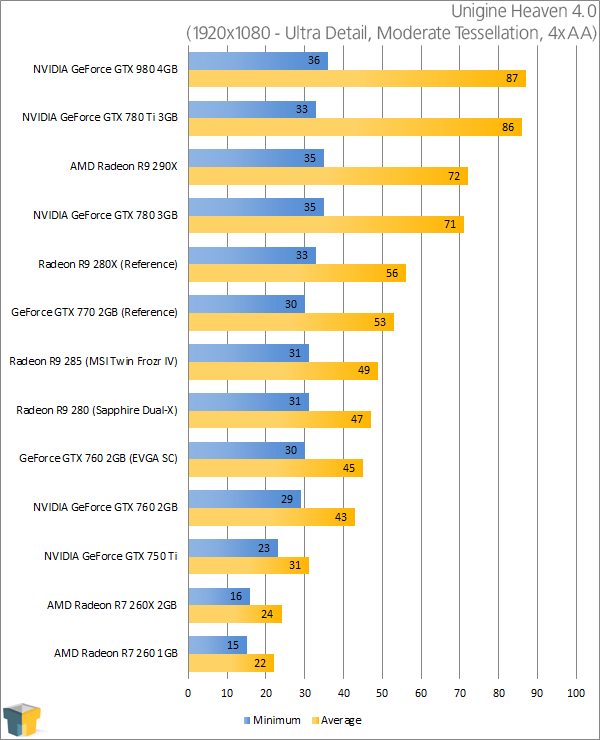
3DMark told us that the 980 performs 13% better than the 780 Ti, but Heaven, with its heavy use of tessellation (even at moderate), keeps the cards level.
Support our efforts! With ad revenue at an all-time low for written websites, we're relying more than ever on reader support to help us continue putting so much effort into this type of content. You can support us by becoming a Patron, or by using our Amazon shopping affiliate links listed through our articles. Thanks for your support!




